Malta’s Late-Neolithic civilisation erected many magnificent structures, including the Hypogeum of Ħal Saflieni. Using Ħal Saflieni as a case study, new research by Dawn Adrienne Saliba suggests that this structure was likely used for performance rituals and represents an early form of proto-theatre.
Malta possesses approximately 30 Late-Neolithic temples, all displaying archaeological signifiers of performative ritual. However, the Hypogeum of Ħal Saflieni, an underground necropolis of the dead (3,800–2,500 BCE), presents one of the best-preserved examples of proto-theatric architecture.
But what do we mean when we say ‘proto-theatre’? The Oxford English Dictionary defines theatre as ‘a place or region where some thing or action is presented to public view.’ Anthropologist Victor Turner theorises that there is a ‘universal theatrical language’ present in the rituals of all cultures – wherever there is any ritual involving more than one person, there is performance, and wherever there is performance, no matter the space, there is theatre.
In this research, the word ‘theatre’ denotes an area designed and constructed to enable performers to address audiences. As the prefix ‘proto’ means ‘the earliest, original’ or ‘at an early stage of development’, when used in combination with ‘theatre’, the word is intended to signify the first forms of intentionally designed performance spaces.
Ritual, Performance, and Theatre
Prof. Anthony Bonanno (Professor of Classics & Archaeology, University of Mata) notes how most of Malta’s Neolithic structures (aka temples) display strong evidence of ritual activity. The Hypogeum was carved in rock during the Tarxien phase, which saw a great many Neolithic temples built or expanded. Most, if not all, of these structures present indicators of ritual performance, including platforms and large open-air forecourts with benches. Ħal Saflieni also possesses architectural indicators of proto-theatricality, including raised stages and framing trilithons. Conveniently, its roofed enclosure and chamber architecture are still intact, making it an excellent case study for analysing the performative dimensions of Maltese Neolithic architecture, especially as important audial, visual, and other sensory features are no longer present in the above-ground sites.
The Upper Level of the Hypogeum provides the first indicators of ritual activity. Evidence shows there was a monumental structure at the entrance – today, a trilithon and two rock-cut oval pits remain. Such an entrance serves as a boundary between the ‘everyday’ world and Ħal Saflieni’s more ‘ritualised zones’. These trilithic entrances may have been used as a framing device for personages communicating with assemblies or as an entrance for ritual participants entering liminal space, and the pits could have been used to hold sacral offerings.
Within one of the pits, a statue resembling the corpulent figures (such as those found in Ħaġar Qim) was found. The figure was painted red, and although headless, two heads were found nearby; the neck of one fits into the statue’s hollow. Archaeologist Isabella Vella-Gregory notes how wear and tear indicates that the head was turned around many times, a feature pointing towards performative ritual.
A few steps away from this area are large caves that contained a single articulated skeleton with its head resting on its right forearm and thousands of ochre-stained bones and grave goods such as pendants or dishes. Such findings are also clear indicators of funerary rituals.
Journey Into the Underworld
Moving from the world above to the levels below would have likely had a marked effect on visitors. They would have descended through a corridor with burials on either side. Walking into such a dark place, they may have been struck with terror or awe, especially the grief-stricken. Ritual participants may have felt as if they were entering the Temple of the Dead or the actual abode of a chthonic deity.
As one descends into the Hypogeum, the first room that comes into view is the Main Chamber. The proto-theatrical elements of this room are evident: the room’s curved, concave shape lends itself to a heightened theatrical experience. Raised platforms, porthole frames, and wall paintings serve as attention-focusing devices. The sequential arrangement of side niches presents opportunities for specialised viewing areas or scenic backdrops.
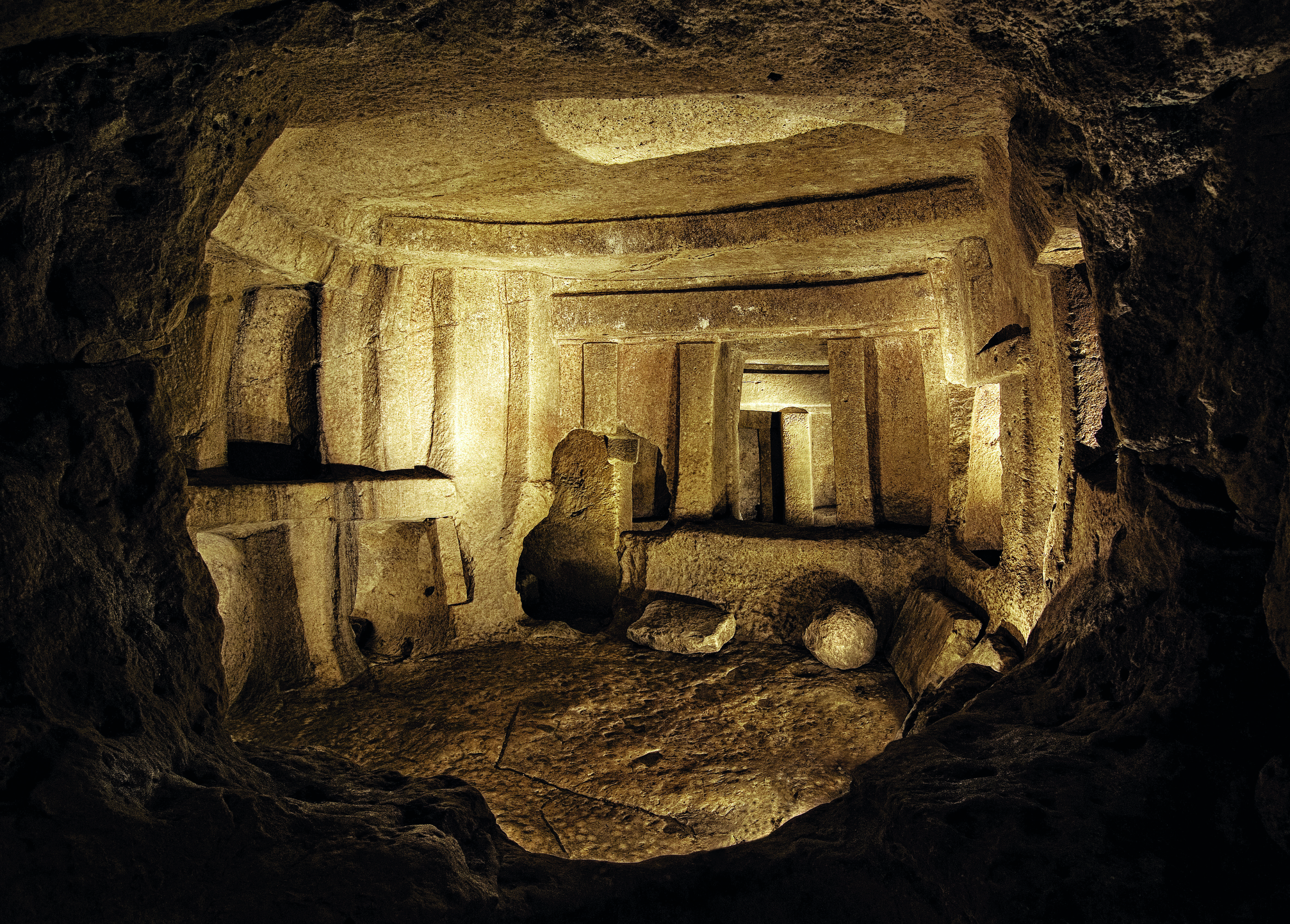
Photo by Clive Vella, Heritage Malta
In 1925, Temistocles Zammit offered the first evidence that this area was used for ritual theatre: ‘A large hall, where people must have assembled, an elaborate chapel in which holy rites were celebrated, an oracular room, tiny cubicles in which devotees could have slept in expectation of inspired dreams are all features specially adapted for a place of worship […] It is presumed, therefore, that the Hypogeum was originally dug out as a mysterious place of worship, a holy temple.’
Nearly every element of this room was shaped to performative ends. Anyone climbing upon the platform would have easily been observed, as the view of this stage is prominent from all sides.
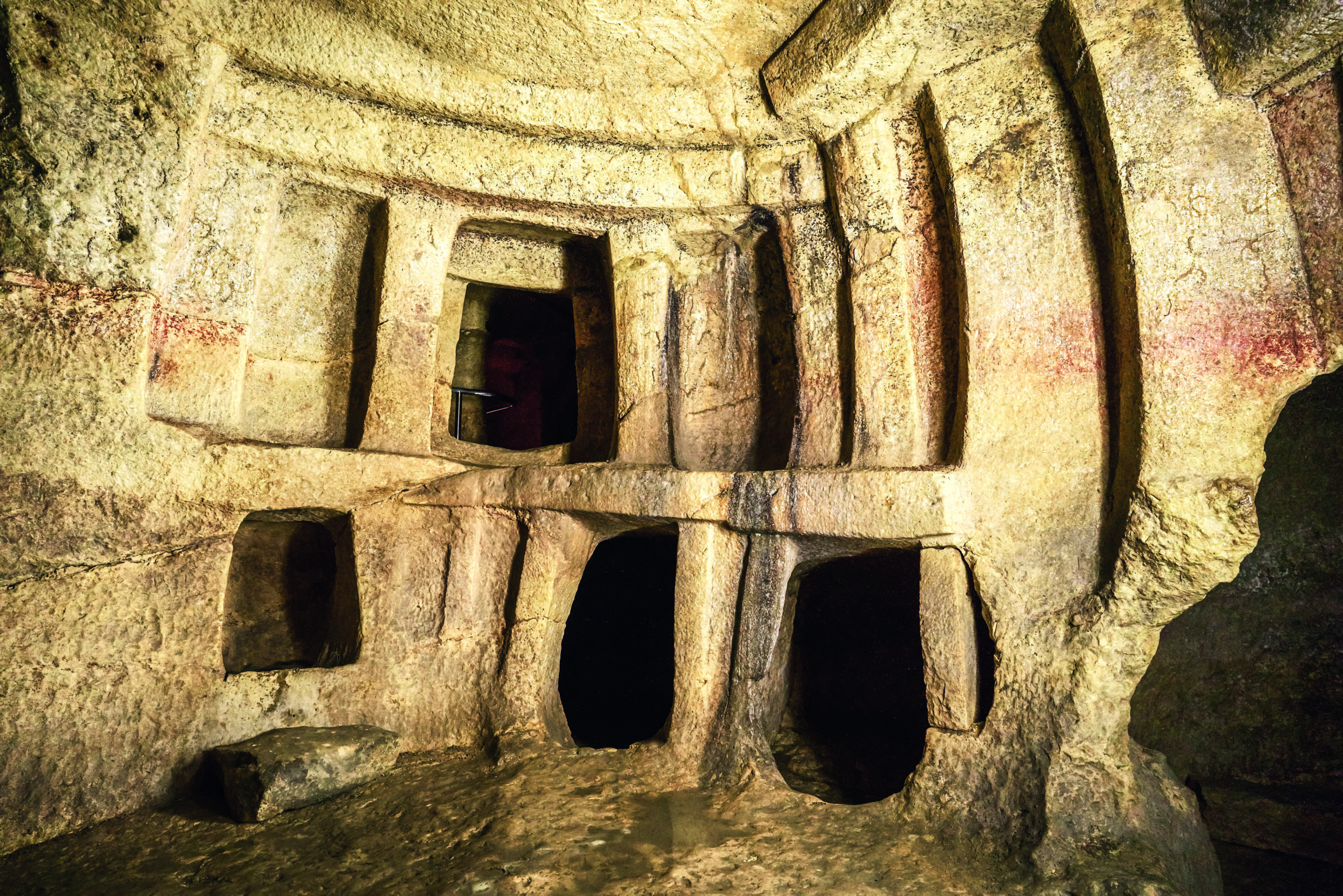
Photo by Clive Vella, Heritage Malta
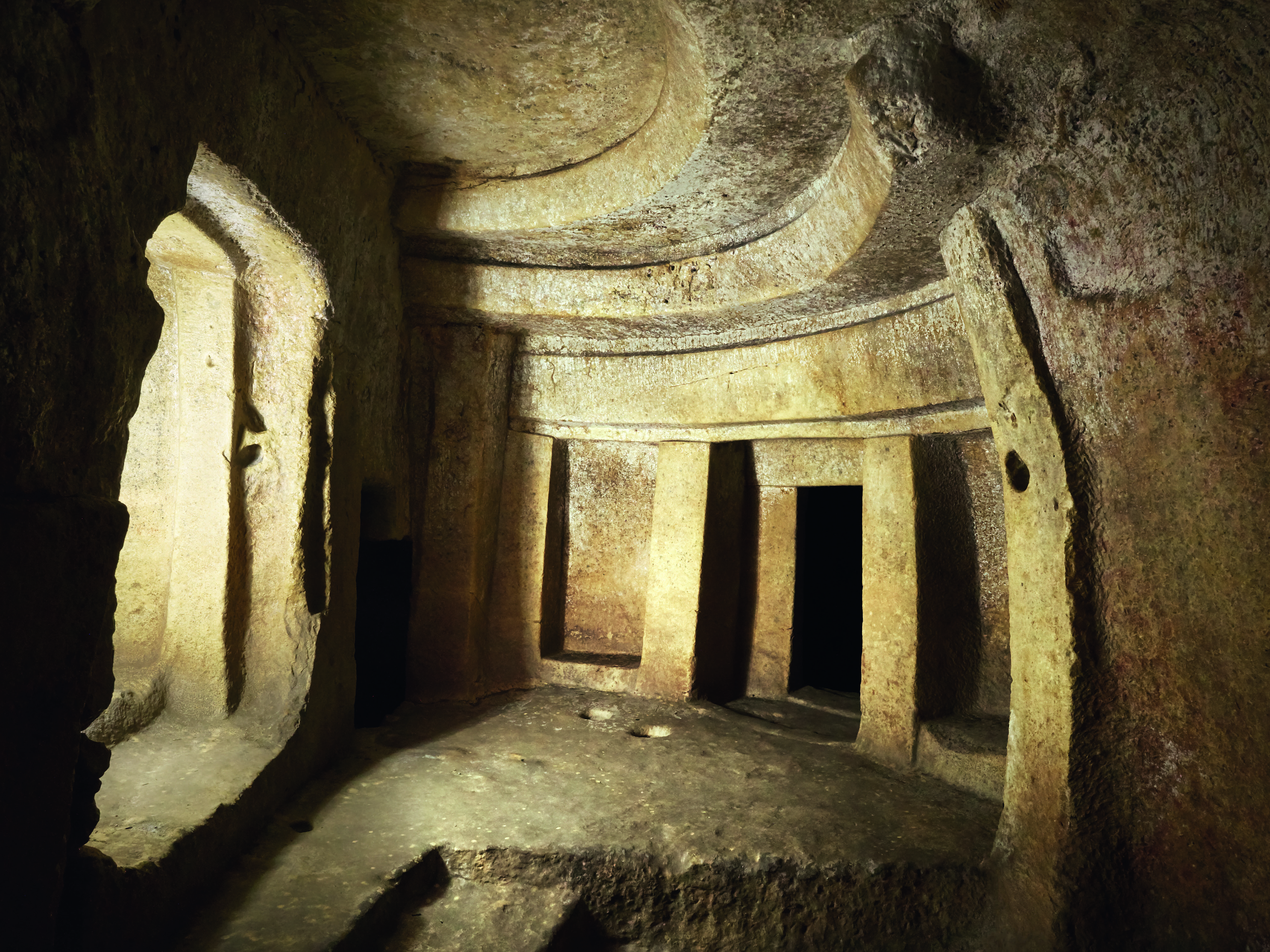
Photo by Clive Vella, Heritage Malta
‘The Oracle Chamber’ and ‘The Holy of Holies’
Bonanno deems the Holy of Holies ‘the ceremonial centre’ of the Hypogeum. This chamber also has profound indicators of proto-theatricality: a curved façade framed by a pair of symmetrical niches and an elevated platform containing a pair of holes which had two goat horns inserted within them, perhaps as offerings. These may have also served as libation holes.
The Oracle Chamber possesses more features pointing to ritual. Among this room’s most striking elements are bright red spirals adorning the ceiling and walls—many have noted how they evoke a sense of sublimity and awe. No one knows what they may have represented, but the one element that seems certain is that they were meant to be gazed upon. The aesthetic interplay of flames and shadows upon these spirals would have made for a profound viewing experience, one likely heightened by the presence of the dead.
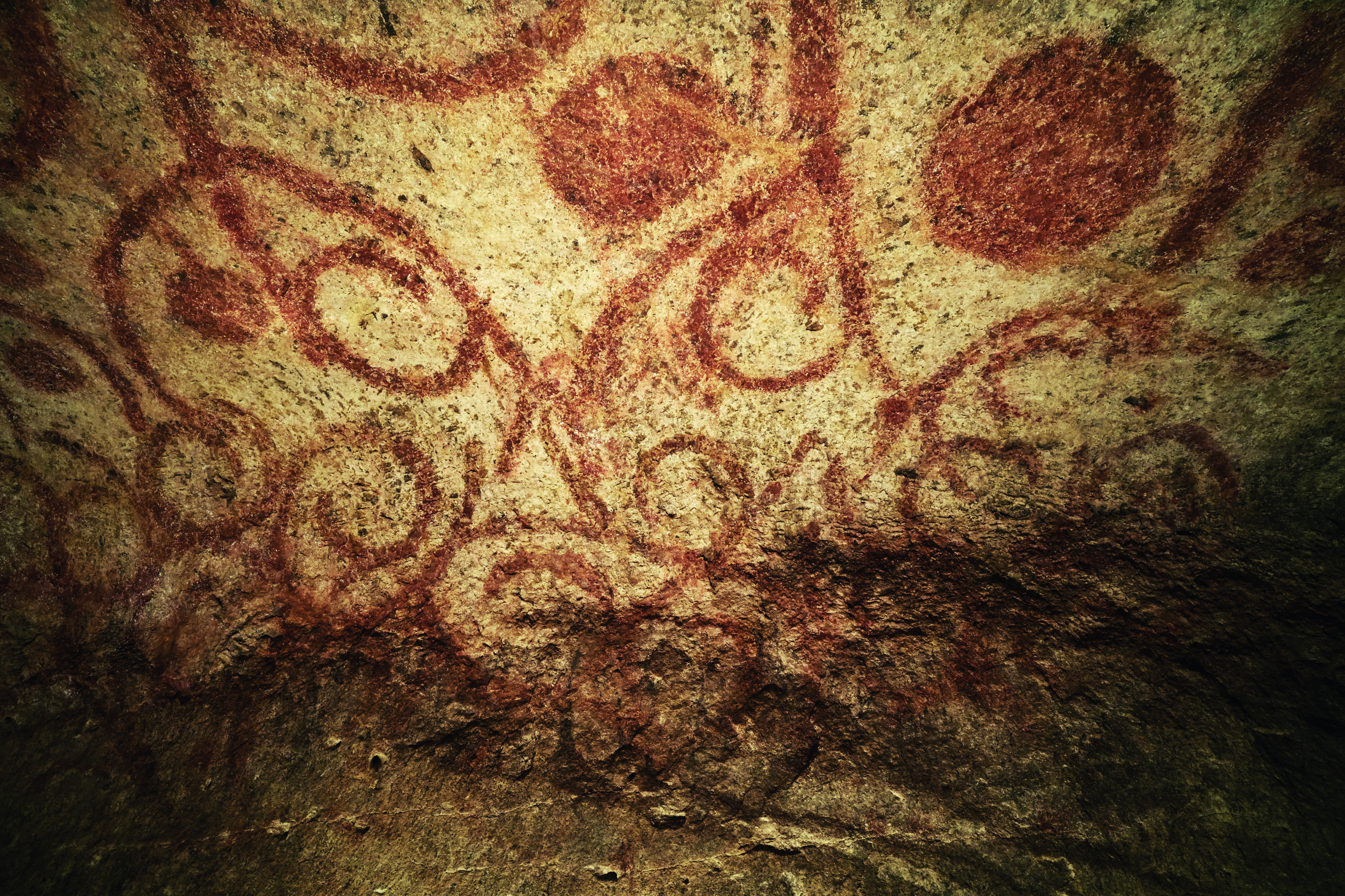
Photo by Clive Vella, Heritage Malta
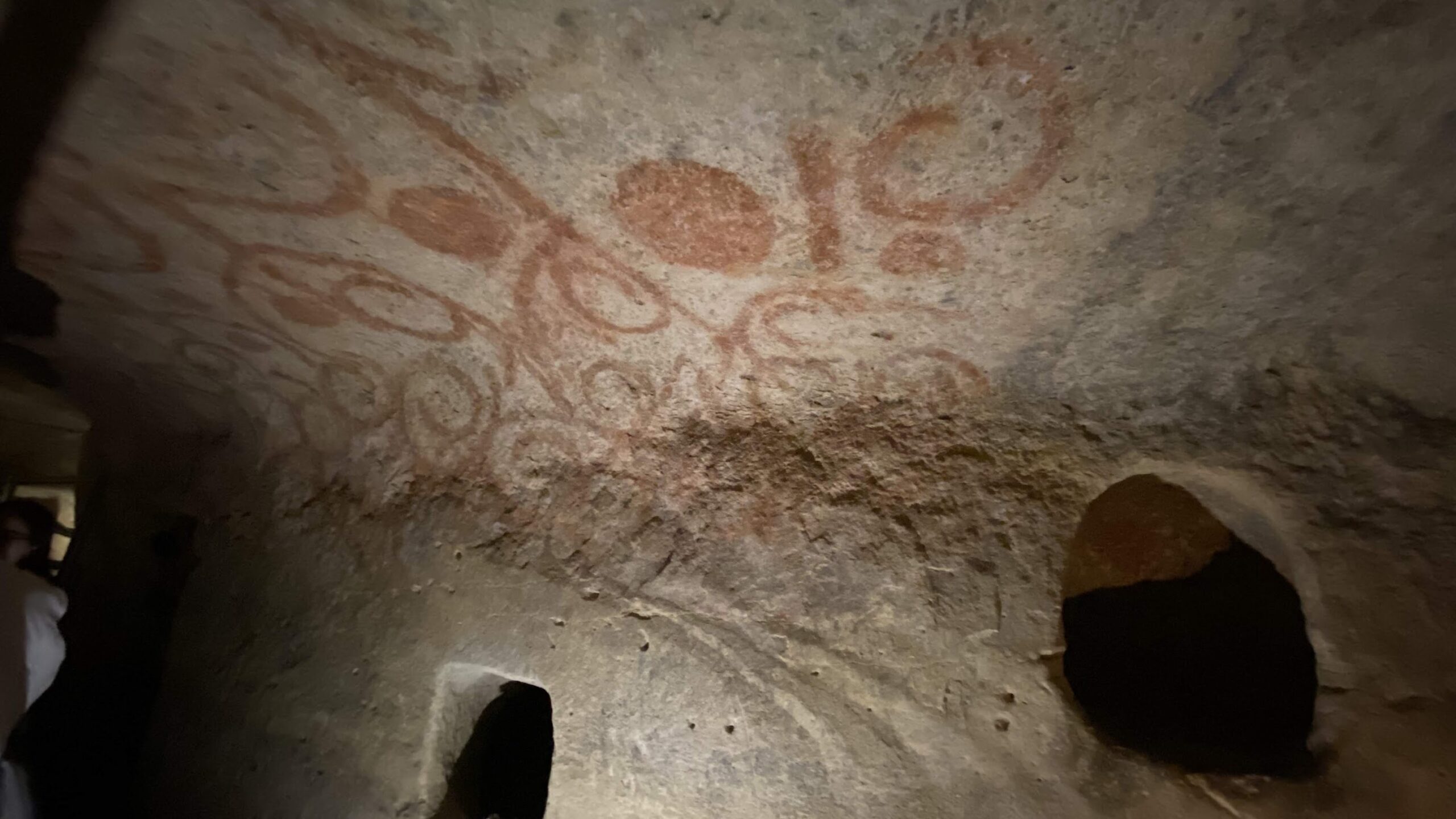
Photo by Dawn Adrienne Saliba
Lending credence to the idea that ceremonial rites took place here is an acoustic-enhancing niche. As Griffiths wrote in 1920: ‘Any word spoken into this place was magnified a hundred-fold and audible throughout the entire underground structure.’ Recent scientific studies have also shown that soundwaves emerging from this area do, in fact, magnify.
It is likely that there was an interconnection between such acoustic phenomena and performative actions such as music and dance – practices that were present across ancient cultures’ funerary rites. In the Egyptian Old Kingdom (2500-2000 BCE), female dancers accompanied coffins on the way to their resting place. One Saqqara (an Egyptian village) relief depicts two girls bearing rattles and leading a funeral procession, while a circle of women playing the tambourine dances around them. In Ancient Greece, the aulós (two attached reed pipes) were played while the body of the deceased was displayed during public mourning. In Etruria, pipes were played amidst the mourners at the feet of the dead. Even today, in West Africa, when a Yoruba tribe member passes, a mask is donned and the performer dances and speaks in their voice; it is believed the spirit of the dead imbues the mask with power that allows future wearers of the mask to become possessed.
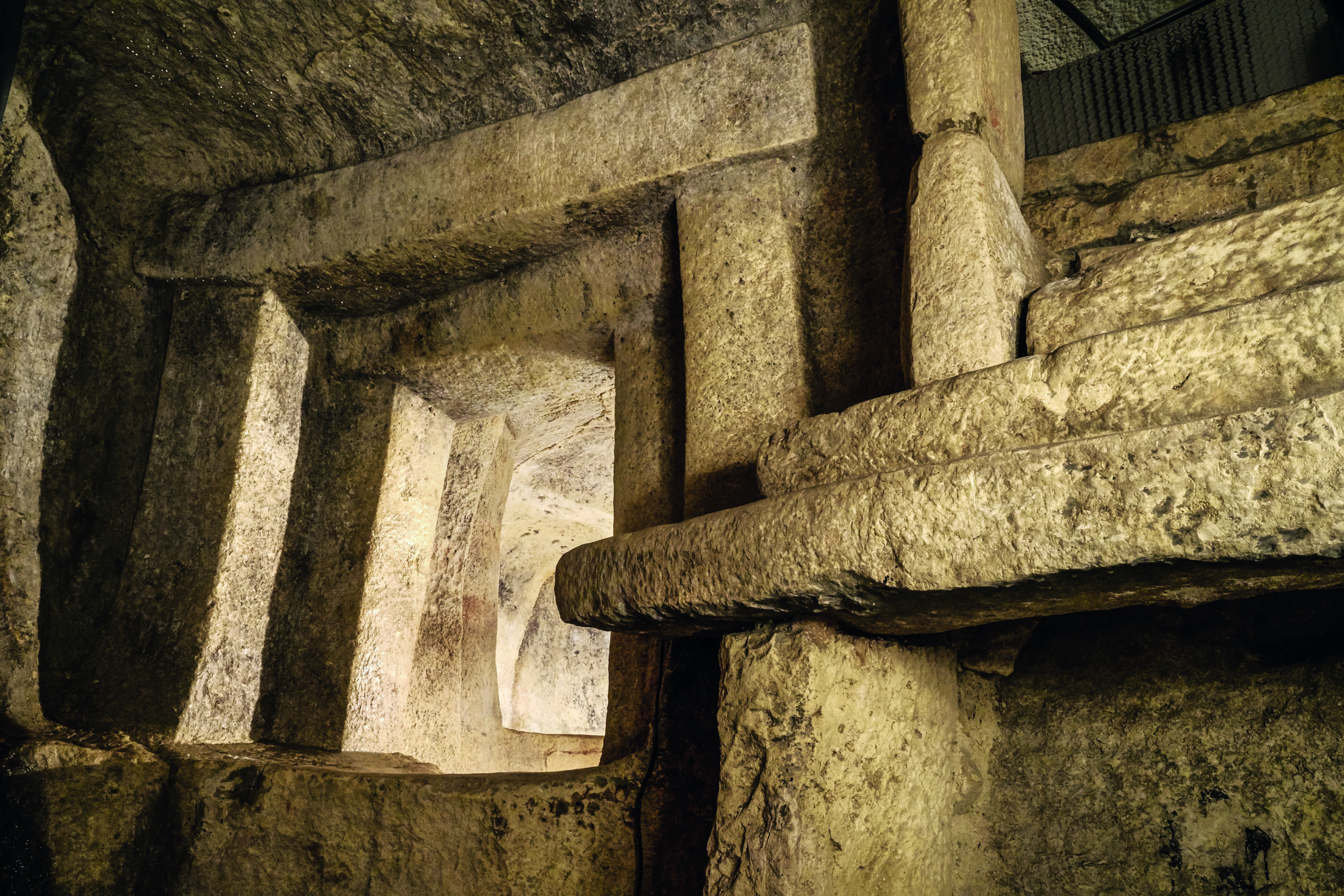
Photo by Clive Vella, Heritage Malta
Monumental architecture is additionally present within the Lower Level, where quantities of skulls and bones were also found. It is tempting to connect this area with rites involving katabasis or ‘descents into the underworld’. Ancient writing may shed light on possible Neolithic Maltese rituals. For instance, one Sumerian poem detailing the descent of a Goddess into the realm of the dead suggests how katabasis and lamentation may have occurred during funerary rites:
I am going down below
when I reach that place
wail for me
cry in lamentation by the ruins…
drum for me …
wander for me
wander through the houses of the gods
tear at your eyes
tear at your mouth
tear at the place you show no one
wear rags for me…
(from Inanna’s Descent)
It seems clear that the Neolithic Maltese culture enacted ritualistic performance in spaces such as Ħal Saflieni that can be construed as proto-theatrical. The elevated platforms, framing trilithons, concave-shaped chambers, and rock-cut features designed to manipulate sound testify to this.
Although Ħal Saflieni and its sister sites are over two thousand years older than the ancient Greek theatres, they have been largely ignored in the discourse surrounding performance studies. Malta’s Neolithic proto- theatric architecture deserves to be placed within the larger continuum of theatre prehistory, and the Hypogeum especially deserves distinctive regard.
Further Reading
Bernardini, C. (2018). Controlling the War. Roman cornua and tubae. In S. De Angeli (Ed.), Music and Sounds in Ancient Europe: Contributions from the European Music Archaeology Project (pp. 76–77). European Music Archaeology Project.
Bonanno, A. (1995). Contextual significance of ritual evidence in Malta. In W. H. Waldren, J. A. Ensenyat, & R. C. Kennard (Eds.), Ritual, Rites and Religion in Prehistory (pp. 136–145). British Archaeological Reports.
Encyclopedia.com. (2019). Funeral Dances. Encyclopedia.com. https://www.encyclopedia.com/humanities/culture-magazines/funeral-dances
Griffiths, W. A. (1920). Malta Halting Place of Nations; First Account of Remarkable Prehistoric Tombs and Temples Recently Unearthed on the Island. National Geographic Magazine, 37, 445–477.
Meador, B. D. S., & Maier, J. (2009). Princess, Priestess, Poet: The Sumerian Temple Hymns of Enheduanna (Classics and the Ancient World). University of Texas Press.
Micozzi, M. (2018). Introducing the Authority. Cornua and litui in Etruria. In Music and Sounds in Ancient Europe: Contributions from the European Music Archaeology Project. European Music Archaeology Project.
Narang, Akshay. 2015. “Archaeoacoustics: Necessity for the Study of the Acoustics of Selected Ancient Architecture.” Academia.edu. https://www.academia.edu/12321126/Archaeoacoustics_Necessity_for_the_study_of_the_Acoustics_of_selected_Ancient_Architecture.
Sachs, C. (1937). World History of the Dance. The Norton Library.
Turner, V. (1982). From Ritual to Theatre: The Human Seriousness of Play. Performing Arts Journal Publications.
Vella-Gregory, I. (2005). The Human Form in Neolithic Malta. Midsea Books Ltd.
Zammit, M. (2022). The Heritage Malta Official Guide to Hal Saflieni Hypogeum. Heritage Malta Publishing.Zammit, T. (1925). The Hal-Saflieni Hypogeum Casal-Paula-Malta.: A Short Description of the Monument with Plan and Illustrations. Museum Department.

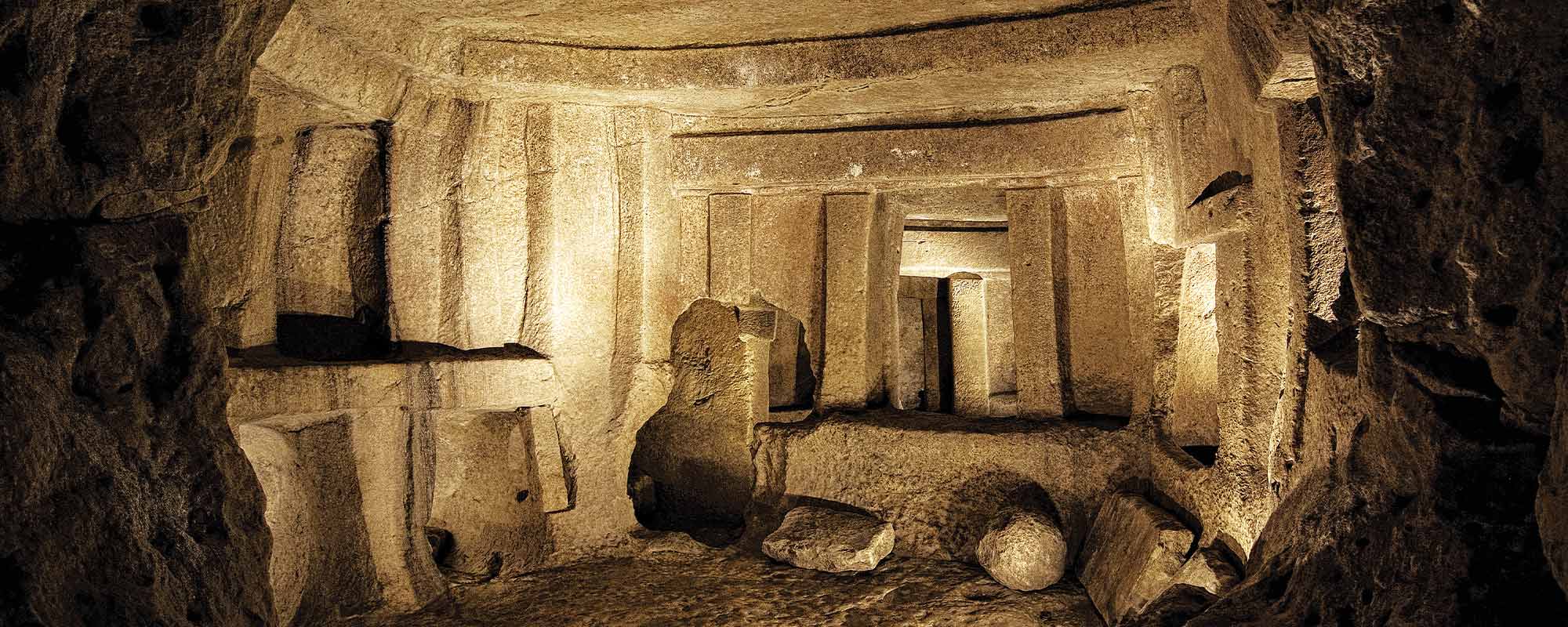



Comments are closed for this article!